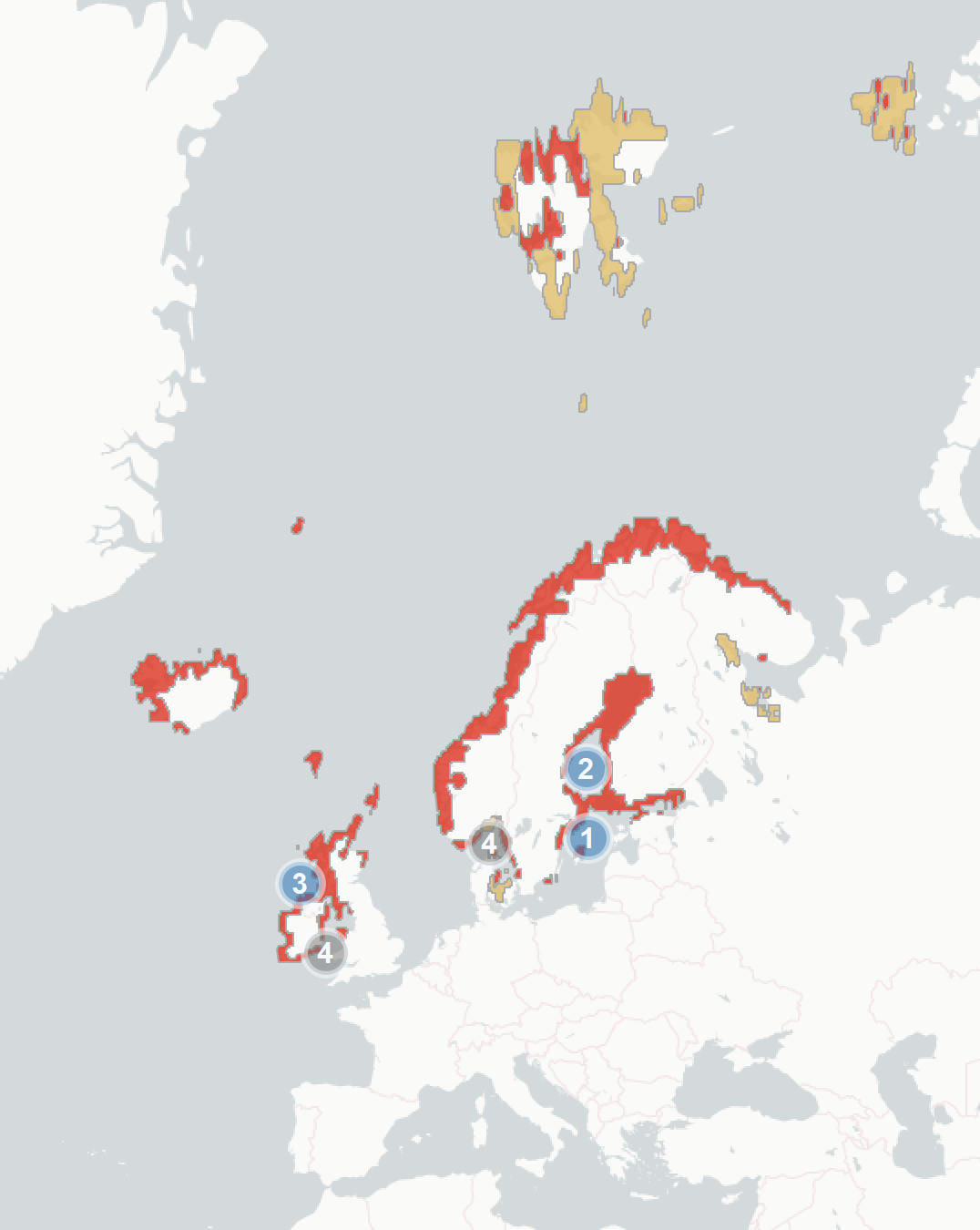Black Guillemot (Cepphus grylle): vulnerability to climate change
Evidence for exposure
Potential changes in breeding habitat suitability:
-
Current breeding area that is likely to become less suitable (76% of current range)
-
Current breeding area that is likely to remain suitable (24%)
-
Current breeding area that is likely to become more suitable (0%)
Current impacts to Black Guillemots attributed to climate change:
-
Negative Impact: Storm action and increased water level have led to flooding and destruction of guillemot nests, and therefore lower breeding success. The frequency of such flooding events is likely to increase. Debris left by storms and flooding can also make large areas of shoreline less suitable for breeding
-
Negative Impact: Range expansion of American mink, partly assisted by climate change, has led to increased rates of predation at guillemot colonies
-
Neutral Impact: Guillemot have shifted their laying date, most likely linked to an increase in sea surface temperature and prey availability
Predicted changes in key prey species:
-
Key prey species are likely to decline in abundance in the Irish Sea and the south-west coast of Sweden
Sensitivity
-
Black guillemots are particularly vulnerable to predation from mink and rats, due in part to their nesting on the ground in exposed areas. Range expansion of mammalian predators due to climate change (which is already occurring in Scandinavia) may have large impacts on guillemot populations.
-
Many black guillemot populations in Europe are declining, the severity is highly variable. There are various underlying causes including marine pollution, predation by invasive species, by-catch, disruption by wind-farms and hunting. Any additional pressure from climate change is likely to accelerate these declines.
Adaptive capacity
-
Black guillemots can shift their phenology in response to changes in environmental conditions. They may therefore be able to adjust to changes in conditions and prey availability and therefore mitigate impacts of climate change.
-
In recent decades black guillemots have established several colonies in new areas around the Irish Sea and North America, which suggests they may be capable of range shifts in response to climate change
